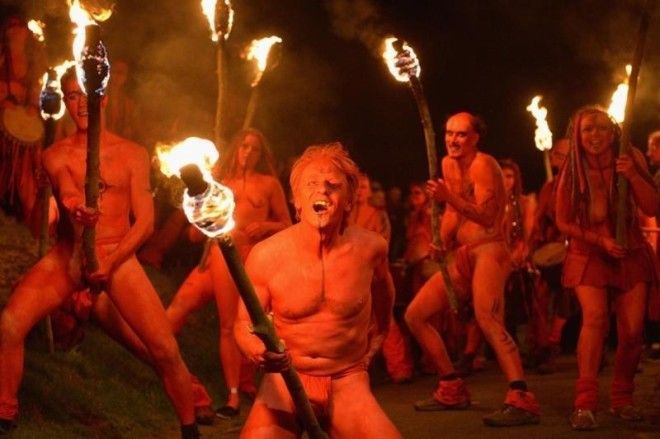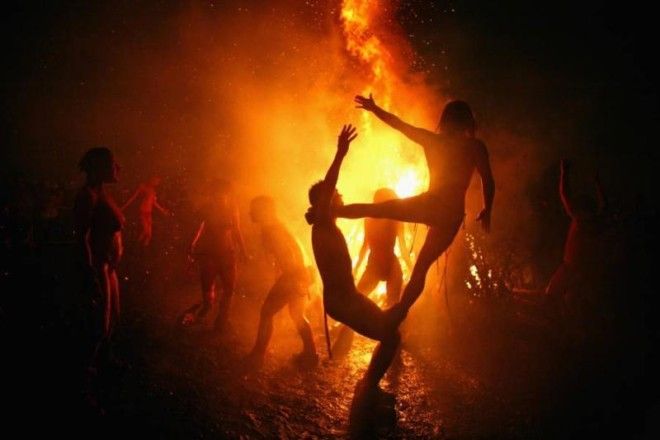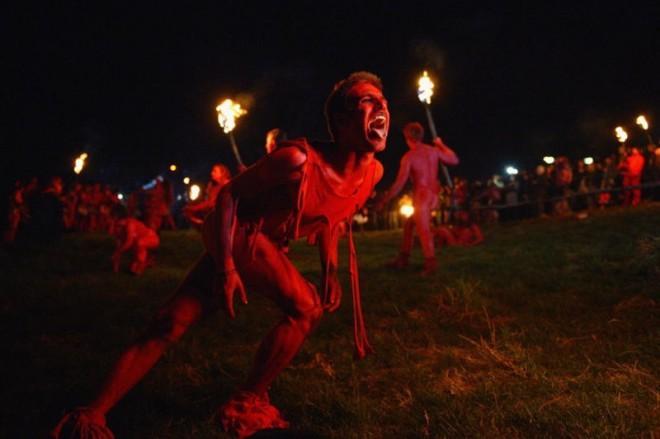Advertising
Beltane, in case you weren’t up-to-date on your ancient Gaelic history, is a Pagan holiday celebrated on May 1, halfway between the spring equinox and the summer solstice. The Beltane festival marks the beginning of summer, and celebrates the fertility of the coming year. It is one of the four Gaelic seasonal festivals—along with Samhain (more commonly known as Halloween these days), Imbolc and Lughnasadh.
Fire plays an important role in the Beltane festivities: Historically, flames, smoke, and ashes from bonfires kindled during the festival were thought to have protective powers. All household fires would be doused and then re-lit from the Beltane bonfire.
During the Beltane feast, food and drink would be offered to the aos sí, the faeries. Homes and cattle were then decorated with yellow May flowers, another invocation of fire.
In modern times, the Beltane Fire Society has revived these ancient traditions by celebrating the Beltane Fire Festival on April 30 in Calton Hill Park:
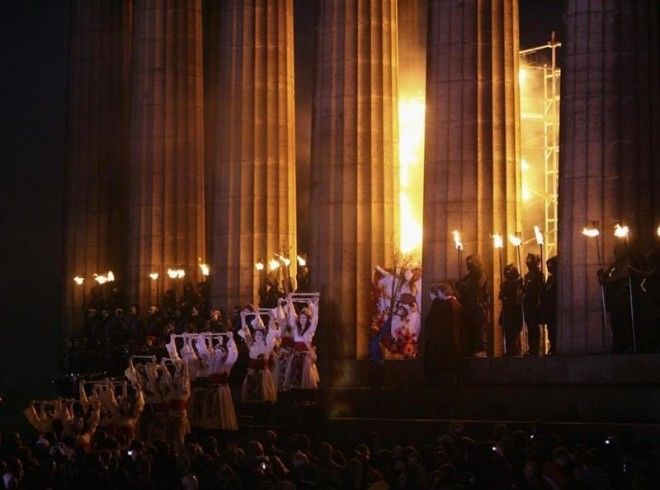
A procession of women in white dresses perform on the National Monumen, called the Acropolis by members of the Beltane Fire Society, at the beginning of the festival.
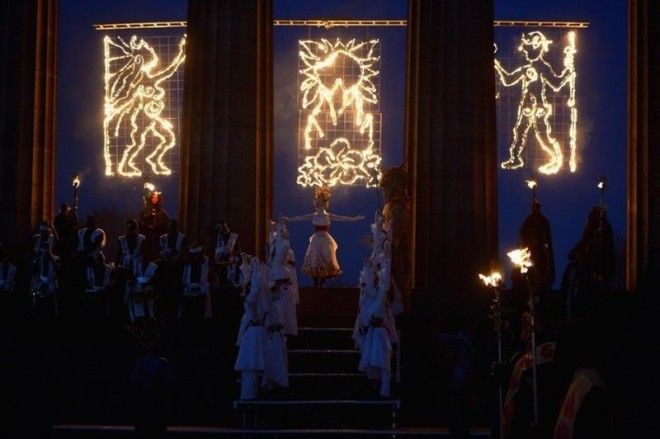



A procession marches through Calton Hill park while holding torches during the Beltane Fire Festival.
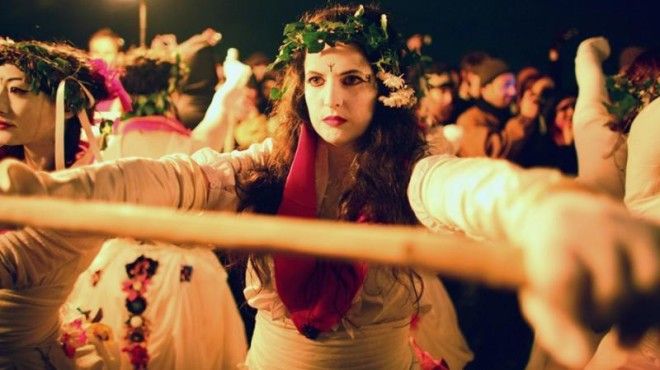
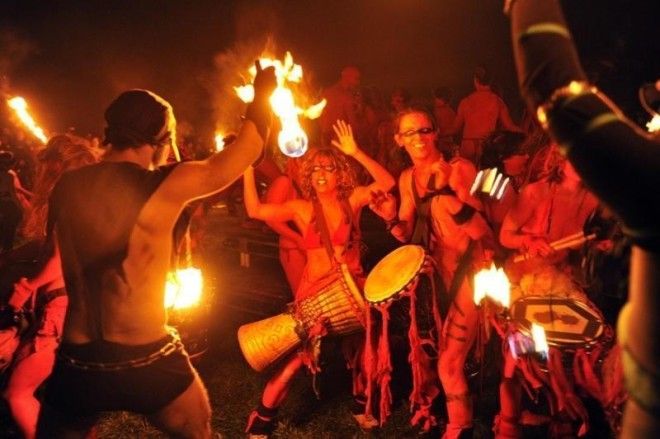
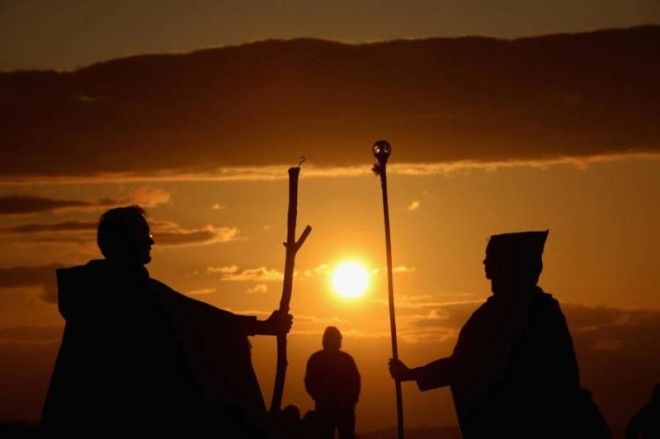

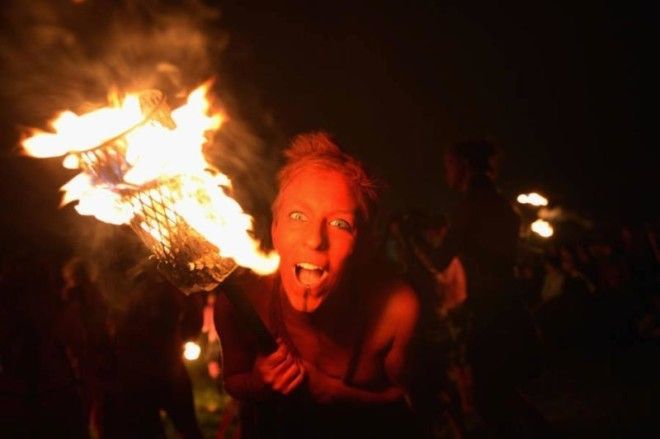

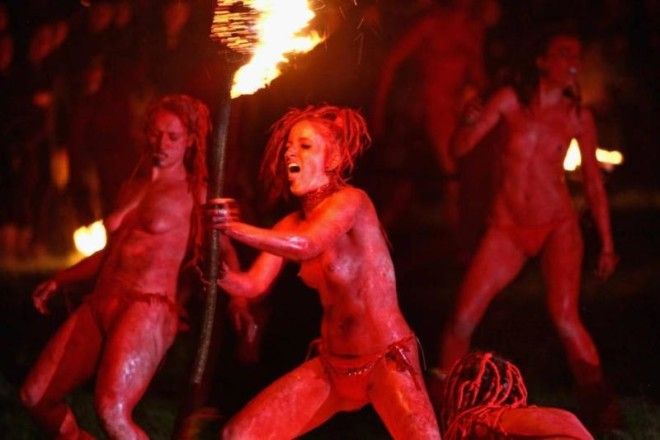
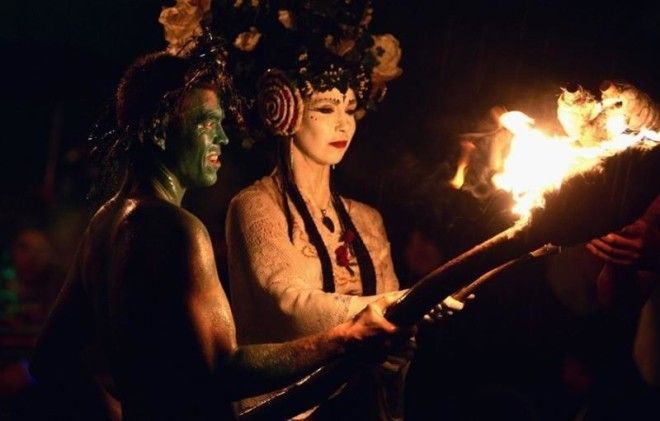


In Edinburgh, a member of the Beltane Fire Society painted himself blue as part of the Beltane Fire Festival on Calton Hill.
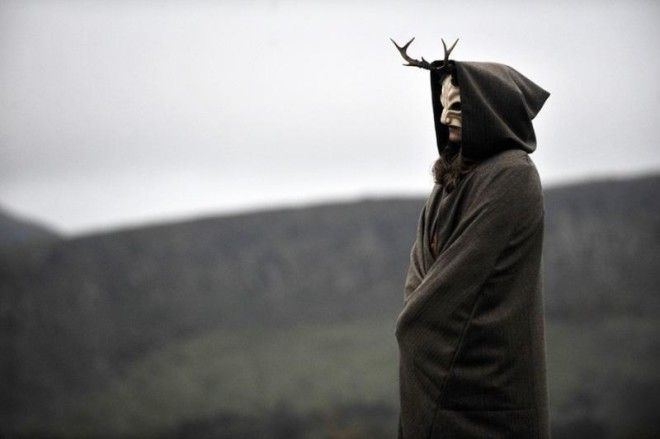
A cloaked man wearing an ominous white mask complete with antlers takes part in the Beltane Fire Festival.
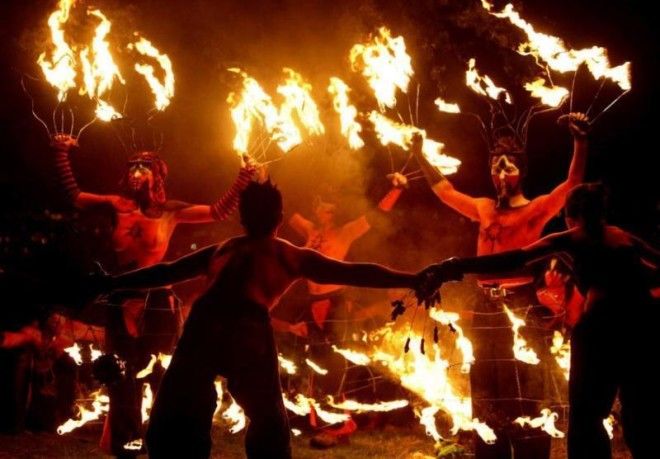

A masked performer gazes into his torch during the Beltane Fire Festival.

A member of Beltane Fire Society dances near the fire during the festival.
